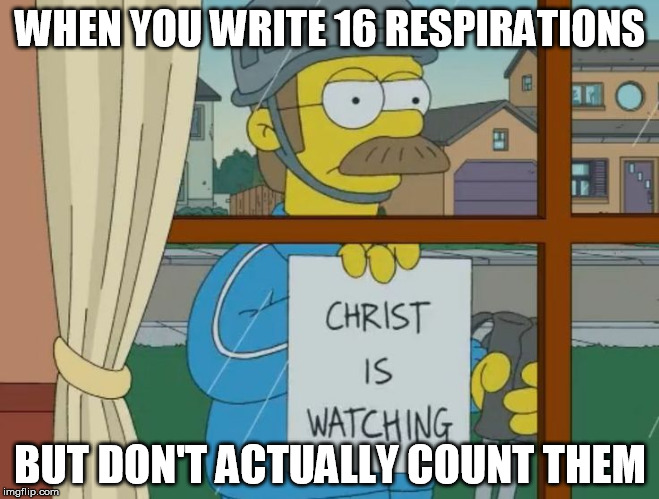Limes
Forum Crew Member
- 34
- 2
- 8
I find it difficult to assess breathing in patients. Sometimes I'll bring their arm towards their chest to feel their chest rise and fall, or to the belly if it's a younger kid. I never tell a patient when I'm assessing their breathing, else they would unconsciously control their breathing.
But there's times when I really can't get their breathing rate, at all. I can't feel any rise or fall, but sometimes I can see it. Any tips?
But there's times when I really can't get their breathing rate, at all. I can't feel any rise or fall, but sometimes I can see it. Any tips?

